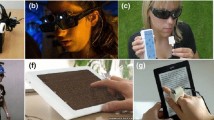Abstract
Assistive technologies nowadays have an increasing application in overcoming the everyday needs of visually impaired persons. Going to the grocery store for groceries is a challenge for any visually impaired person who moves without a personal assistant. Creating a perception of the space in which the person is located and the possibility of orientation in such an environment is significantly reduced. The solutions and services currently available are based solely on reading products using some form of assistive technology. In this research, user needs were analyzed to define the necessary information to master the shopping process. The research aims to define a conceptual system architecture to deliver InnIoTShop information service to users moving through smart stores. The proposed architecture is based on the IoT concept, and an InnIoTShop service taxonomy has been created for this service. For data collection, processing, and fusion, the concept of Fog/Cloud Computing and M2M and M2H technology was used, which enables the adaptation of information to visually impaired persons. The paper also validated specific elements of the system architecture, which confirmed individual service functionalities' operation.










Similar content being viewed by others
References
Periša, M., Marković, G., Kolarovszki, P., & Madleňák, R. (2019). Proposal of a conceptual architecture system for informing the user in the IoT environment. PROMET Traffic & Transportation, 31(1), 37–47. https://doi.org/10.7307/ptt.v31i1.2677
Manduchi, R., & Kurniawan, S. (2013). Assistive technology for blindness and low vision. (R. Manduchi & S. Kurniawan, Eds.). CRC Press.
Elgendy, M., Sik-Lanyi, C., & Kelemen, A. (2019). Making shopping easy for people with visual impairment using mobile assistive technologies. Applied Sciences, 9(6), 1061. https://doi.org/10.3390/app9061061
López-de-Ipiña, D., Lorido, T., & López, U. (2011). BlindShopping: Enabling accessible shopping for visually impaired people through mobile technologies. In Lecture Notes in Computer Science (including subseries Lecture Notes in Artificial Intelligence and Lecture Notes in Bioinformatics) (Vol. 6719 LNCS, pp. 266–270). https://doi.org/10.1007/978-3-642-21535-3_39
Keerthana, S., Inaya, S. A., & Abarna, S. (2018). Design of smart shopping enabler for visually challenged people. Biomedical and Pharmacology Journal, 11(4), 2143–2149. https://doi.org/10.13005/bpj/1594
Lobo, V., Prabhu, R., Bal, P., & Reddy, K. (2019). A smart shopping system for visually impaired. International Journal of Innovative Technology and Exploring Engineering 8(12), 315–318. https://doi.org/10.35940/ijitee.k1050.09811s219
Hu, M., Chen, Y., Zhai, G., Gao, Z., & Fan, L. (2019). An overview of assistive devices for blind and visually impaired people. International Journal of Robotics and Automation, 34(5), 580–598. https://doi.org/10.2316/J.2019.206-0302
Steel, E. J., Layton, N. A., Foster, M. M., & Bennett, S. (2016). Challenges of user-centred assistive technology provision in Australia: Shopping without a prescription. Disability and Rehabilitation: Assistive Technology, 11(3), 235–240. https://doi.org/10.3109/17483107.2014.941953
Bhowmick, A., & Hazarika, S. M. (2017). An insight into assistive technology for the visually impaired and blind people: State-of-the-art and future trends. Journal on Multimodal User Interfaces. https://doi.org/10.1007/s12193-016-0235-6
Messaoudi, M. D., Menelas, B.-A.J., & Mcheick, H. (2020). Autonomous smart white cane navigation system for indoor usage. Technologies, 8(3), 37. https://doi.org/10.3390/technologies8030037
Boldu, R., Dancu, A., Matthies, D., Buddhika, T., Siriwardhana, S., & Nanayakkara, S. (2018). FingerReader2.0: Designing and Evaluating a Wearable Finger-Worn Camera to Assist People with Visual Impairments while Shopping. Proceedings of the ACM on Interactive, Mobile, Wearable and Ubiquitous Technologies, 2(3), 1–19. https://doi.org/10.1145/3264904
Wang, Y., & Yang, C. (2016). Intelligent shopping trolley (IST) system by WSN to support hypermarket IoT service. In SENSORCOMM 2016: The tenth international conference on sensor technologies and applications intelligent (pp. 77–82).
Nandi, V., & Divyashree, B. A. (2017). An IoT based automated shopping system for blind people using RFID (radio frequency identification). International Journal of Trend in Research and Development (IJTRD), 4(3), 378–381.
Zientara, P. A., Lee, S., Smith, G. H., Brenner, R., Itti, L., Rosson, M. B., & Narayanan, V. (2017). Third eye: A shopping assistant for the visually impaired. Computer, 50(2), 16–24. https://doi.org/10.1109/MC.2017.36
Clark, J. R., Page, L., & Page, A. S. (2017). Shopping cart for vision-impaired users.
Periša, M., Anić, V., Badovinac, I., Ćorić, L., Gudiček, D., Ivanagić, I., & Terzić, L. (2021). Assistive technologies in function of visual impaired person mobility increases in smart shopping environment. In L. Knapčíková, D. Peraković, A. Behúnová, & M. Periša (Eds.), 5th EAI International conference on management of manufacturing systems (p. 350). Heidelberg: Springer International. https://doi.org/10.1007/978-3-030-67241-6
Sethi, P., & Sarangi, S. R. (2017). Internet of Things: Architectures, protocols, and applications. Journal of Electrical and Computer Engineering, 2017, 1–25. https://doi.org/10.1155/2017/9324035
Gardašević, G., Veletić, M., Maletić, N., Vasiljević, D., Radusinović, I., Tomović, S., & Radonjić, M. (2017). The IoT architectural framework, design issues and application domains. Wireless Personal Communications, 92(1), 127–148. https://doi.org/10.1007/s11277-016-3842-3
Periša, M., Kuljanić, T. M., Cvitić, I., & Kolarovszki, P. (2019). Conceptual model for informing user with innovative smart wearable device in industry 4.0. Wireless Networks. https://doi.org/10.1007/s11276-019-02057-9
Cheraghi, S. A., Namboodiri, V., & Walker, L. (2017). GuideBeacon: Beacon-based indoor wayfinding for the blind, visually impaired, and disoriented. 2017 IEEE international conference on pervasive computing and communications, PerCom 201, 121–130. https://doi.org/10.1109/PERCOM.2017.7917858
Periša, M., Cvitić, I., Peraković, D., & Husnjak, S. (2019). Beacon technology for real-time informing the traffic network users about the environment. Transport. https://doi.org/10.3846/transport.2019.10402
Seo, D. B., Jeon, Y. B., Lee, S. H., & Lee, K. H. (2016). Cloud computing for ubiquitous computing on M2M and IoT environment mobile application. Cluster Computing, 19(2), 1001–1013. https://doi.org/10.1007/s10586-016-0573-x
Author information
Authors and Affiliations
Corresponding author
Additional information
Publisher's Note
Springer Nature remains neutral with regard to jurisdictional claims in published maps and institutional affiliations.
Rights and permissions
About this article
Cite this article
Periša, M., Peraković, D., Cvitić, I. et al. Innovative ecosystem for informing visual impaired person in smart shopping environment: InnIoTShop. Wireless Netw 28, 469–479 (2022). https://doi.org/10.1007/s11276-021-02591-5
Accepted:
Published:
Issue Date:
DOI: https://doi.org/10.1007/s11276-021-02591-5




